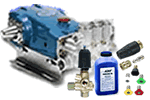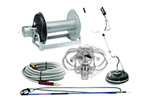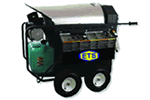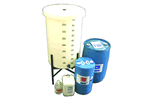Common Components of Parts Washer
There are many factors to be considered when designing a parts washer. The main factors to be considered are the shape, size, and configuration of the parts to be cleaned. It is also essential to consider the weight, part angles, surface area, blind holes, and closed sections. These considerations are very important for ensuring the efficient operation of a parts washer.
Different manufacturers of part washers offer unique solutions for every application in the industry. These solutions are tailored based on the CNC programming, baskets, back and front-loading, trays, rack systems, rotary tables, and conveyor belts in a fabrication shop system. Typically, parts washers use aqueous solutions to clean parts. The basic processes of a parts washer are soak, boil, and blast.
The design of a parts washer will rely on the overall structure of the parts to be washed. Aside from this, the batching (how many piece parts to wash in one process) will also play an important role in deciding the design and construction of a parts washer.
The common components that make up an assembly of a parts washer are a water heater, filtration system, pumps, scrubbers, brushes, power nozzles, and an enclosure.
Water Heater:
A heating unit for a parts washer can be gas, electric, or steam type. The heating unit is responsible for speeding up the chemical reaction between the detergents, chemicals, and solvents. The purpose of heating the solution during washing is to speed up the time needing to wash difficult substances or materials.
Filtration System:
After the process in a parts washer, the cleaning solution from the cleaning tank will be stored back in the storage tank for reuse. The cleaning solution will pass through two filters as it goes back to the storage tank. The first filter is responsible for sorting out large particles using large grids. After this, the second filter will filter out finer particles that were not filtered out from the large grid.
Pump:
The primary role of a pump in a parts cleaner is to transport the cleaning solutions to the cleaning tank. This type of submerged pump is designed to operate in environments involving harsh chemicals like detergents, water, and solvents. Pumps for a parts washer are designed to operate continuously and transfer liquids from the storage tank to the cleaning tank. It is important to consider pumps that can work with extreme temperatures and volume flow rates to ensure the cleaning system’s reliability.
Scrubbers:
These components can be made up of a series of sprayers or a set of brushes. During the cleaning process, a part of the cleaning solution goes to the scrubber in which it will be sprayed to clean the part. The spray nozzle can be seen in the back and on the cabinet’s side in the heated parts washer.
Cabinet:
There are different sizes and capabilities of a parts washer. In a “cabinet-type parts washer”, the whole cleansing process takes place in the cabinet. The cabinets are engineered to withstand extreme pressures during the washing process. In addition to its structural integrity, the cabinets should be made from corrosion-resistant materials to prevent any deterioration caused by the solvents and detergents.
Low Water Shut off valve.
A low-water shut-off valve is a safety device commonly installed in parts washers to prevent damages resulting from unsupervised water tank levels. The low water Shut-off valve automatically turns the parts washer off until the storage tank is filled at the required level.
For more information contact ETS Company at ets@etscompany.com or by calling us toll free at 1-877-824-7763.
Or visit ShopETSonline.com









